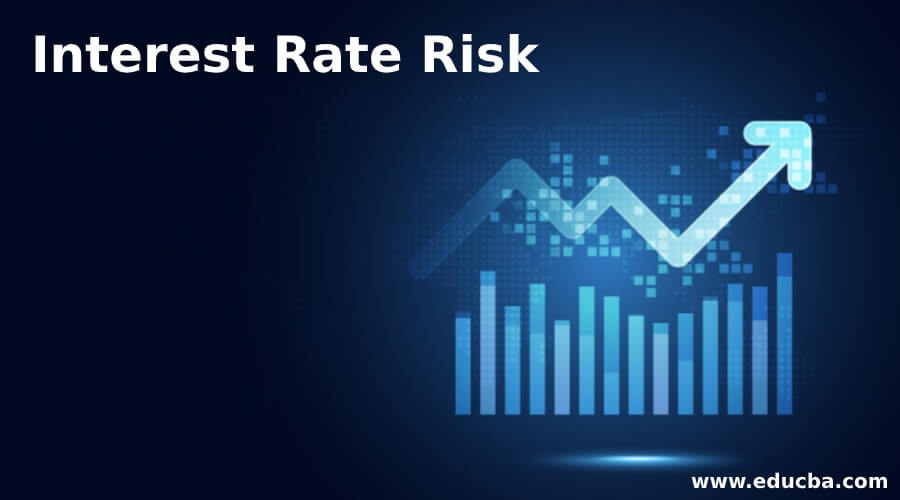Updated July 6, 2023
What is Interest Rate Risk?
The term “interest rate risk” refers to the probability of a change in the value of fixed-income security owing to fluctuations in interest rates. Although any unexpected change in interest rates poses a risk, investors are primarily concerned with the downside risk.
The interest rate significantly influences the price of any fixed-income security. As such, it directly impacts the investors of fixed-income securities, such as when the interest rate goes up, the cost of fixed-income securities decreases and vice versa.
Explanation of Interest Rate Risk
The probability of value depreciation of fixed-income securities due to a change in interest rate is known as interest rate risk. Typically, a rise in the interest rate results in a decline in the price of the existing bonds and other fixed-income securities. Further, it also increases opportunity cost, which is the cost of missing out on other better investment options.
How to Manage Interest Rate Risk?
Some of the most common techniques used to manage it include:
- Diversification: Investors can diversify their portfolios by adding less affected securities by the fluctuations in interest rates. Examples of such diversification include investing in equities or creating a mix of long and short-term fixed-income securities.
- Hedging: Investors can also mitigate it using various hedging strategies, including derivatives. Some of the most common examples are options, futures & forward contracts, interest rate swaps, etc.
- Invest in short-term securities: The investors can sell off long-term securities and clear up the funds for reinvestment in securities with higher returns. Then they can invest in securities with relatively shorter maturity tenure as these securities are less vulnerable to the volatilities in interest rate.
- Purchase of floating-rate bonds: As the name suggests, these bonds have a floating interest rate since they are directly linked to market fluctuations. In this way, investors can eliminate the risk of a change in investment value due to volatility in interest rates.
Example of Interest Rate Risk
Let us take the example of John Doe, who invested in 50 fixed-rate bonds worth $1,000 each. The fixed-income securities provide a return of 4% per annum, which will be paid at maturity one year from now.
Therefore, the total value of the investment at the end of one year calculates as,
- Total value = $1,000 * 50 + 4% * $1,000 * 50
- Total value = $50,000 + $2,000
- Total value = $52,000
One week after the investment, John Doe knew that the interest rate on the newly issued securities went up to 5% per annum.
Therefore, had John Doe invested after one, the total value of the investment at the end of one year would have been,
- Total value new = $1,000 * 50 + 5% * $1,000 * 50
- Total value new = $50,000 + $2,500
- Total value new = $52,500
Thus, it becomes evident that John Doe experienced a missed opportunity of $500 in investment value as the interest rate offered on the newly issued fixed securities increased to 5%. In contrast, the investments linked to securities with lower returns. Consequently, John Doe would be less inclined to maintain the old investment and would express interest in reinvesting in the newly issued securities. The risk of securities losing value due to increased interest rates is known as interest rate risk.
Types of Interest Rate Risk
It can be classified into two major types – price risk and reinvestment risk.
- Price risk: It refers to the risk of change in the value of the securities that may result in unexpected gains or losses at the time of its sale.
- Reinvestment risk refers to the inability to find favorable reinvestment opportunities due to a change in the interest rate. It is divided into two sub-parts –
- Duration risk is the probability of involuntary prepayment or extension of the investment tenure beyond scheduled maturity.
- Basis risk: It is the risk of imperfect hedging, i.e., the hedging strategy will fail to move in the opposite direction to the change in interest rate.
Sources
The primary sources of it are as follows:
- Repricing Risk: A primary source is the risk of repricing bank assets, liabilities, and off-balance sheet positions in the case of a floating rate.
- Yield Curve Risk arises due to unexpected shifts in the yield curve that adversely impact a bank’s income or underlying economic value.
- Basis Risk: It occurs due to an imperfect correlation between the rates paid and earned on different instruments with comparable repricing characteristics.
- Optionality arises from the options in the bank assets, liabilities, and off-balance sheet positions.
Factors Impacting
The factors impacting it are as follows:
- Credit rating: Lenders increase the interest rate being charged due to a deterioration in the credit risk rating of borrowers, which accentuates the interest rate risk.
- Economic outlook: During an economic downturn, companies face difficulties refinancing and borrowing new loans as the interest rates surge. Increased cash outflow due to higher interest rates, combined with the ambiguity surrounding cash inflow, heightens companies’ exposure to interest rate risk.
- Foreign exchange rates: The growing strength of the domestic currency against other foreign currencies can adversely impact the borrowers’ interest rate risk if they pay interest on foreign currency debt.
Conclusion
So, it can be seen that it directly influences the cash flow of fixed-income securities. But not to worry, as many hedging tools are available in the market to mitigate this risk to a large extent.
Recommended Articles
This is a guide to Interest Rate Risk. Here we also discuss the introduction and how to manage it, along with types and examples. You may also have a look at the following articles to learn more –




